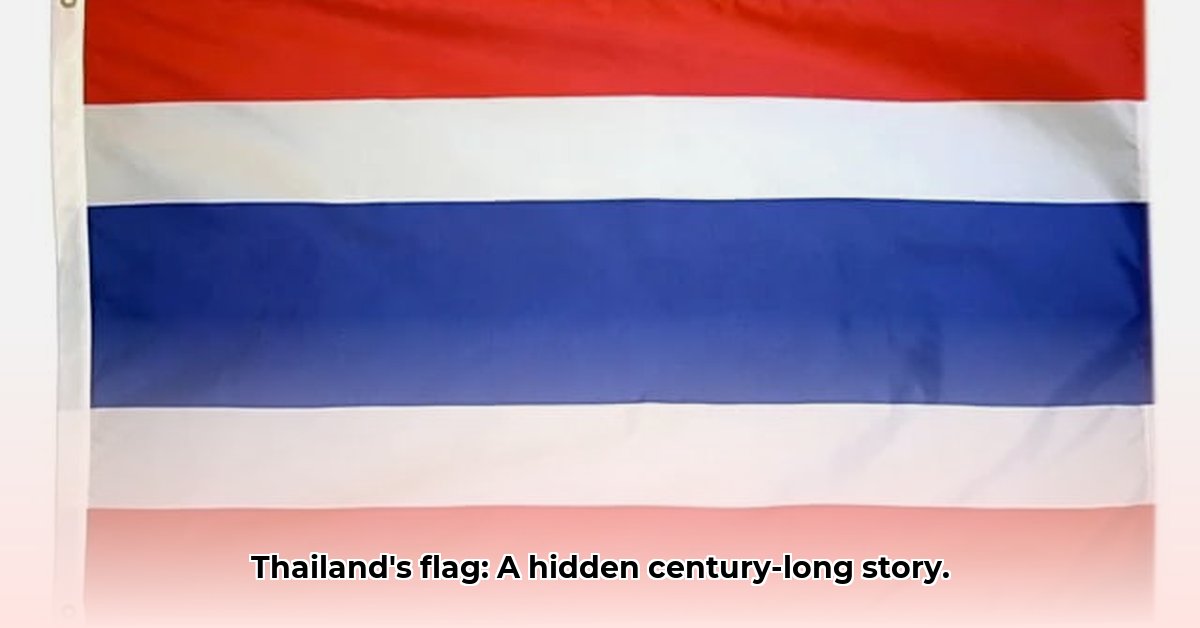
A Century of Change: From Simple Beginnings to National Symbol
The Vlag Thailand, or Thai flag, is more than just a colourful banner; it's a vibrant tapestry woven from centuries of history, deeply intertwined with the nation's identity and its evolving relationship with the world. Its journey, from a simple red flag to the five-striped design we know today, mirrors Thailand's own progression. But what stories do those stripes and colours tell? What does each shade represent? Let's delve into the rich history behind this iconic symbol.
The earliest form of the Thai flag was a simple, plain red banner. This bold, uncomplicated design reflected the nation’s burgeoning strength and pride. Red, a colour traditionally associated with power, prosperity, and good fortune in Thai culture, served as a fitting representation of the newly emerging nation. As Thailand engaged more extensively with the global community, the need for a more nuanced national symbol became apparent.
The Tricolour Emerges: A Symbol of Unity and Faith
Following early red-only designs, the Thai flag evolved into a tricolour design, incorporating red, white, and blue stripes. This transition marked a significant moment in Thailand’s history, introducing a visual language that embodied wider national values. The inclusion of white, the colour of purity and peace deeply connected to Buddhism, underscored the role of faith in Thai society. The addition of blue, strongly associated with the Thai monarchy, signified the King's crucial role in the governance and unity of the nation. This tricolour design reflected Thailand’s growing confidence and its distinct identity on the international stage.
The Five-Striped Flag: A Visual Symphony of Nationhood
By 1917, the Vlag Thailand had taken its current form: five horizontal stripes of red, white, blue, white, and red. The central blue stripe, notably wider than the others, powerfully emphasises the significance of the monarchy and its enduring role in Thai society. This design consolidates the symbolism already established in the tricolour, bringing together the nation, religion, and monarchy under a single, unified banner. The five stripes represent a beautiful visual symphony, each colour carrying deep meaning and resonating with the heart of the Thai people. This is more than just about the colours; it's a statement of national unity, a powerful representation of the interconnectedness between the King, the Buddhist faith, and the Thai populace.
Colour Precision: A Matter of National Identity
Even after the design's adoption, ensuring the consistent and accurate representation of the flag's colours proved challenging. For many years, variations in the shades of red, white, and blue appeared on different flags. This inconsistency underscored the need for officially recognised standards, which were eventually established in 2017. The establishment of precise colour codes wasn't merely an aesthetic concern; it was a critical step in ensuring the appropriate level of respect and recognition for the national flag. It ensured that the Vlag Thailand was accurately and consistently represented globally.
Beyond the Colours: Symbolism and National Pride
The Thai flag's enduring power lies not just in its visual appeal, but in its profound symbolism. It goes beyond mere aesthetics; it represents a living history, reflecting the nation's collective journey and its aspirations. The flag's evolution mirrors the dynamic shifts in Thailand's political and social landscape, its changing relationship with the world, and the enduring unity of its people. The potent symbolism – nation, religion, and monarchy – weaves together the threads of Thai identity, fostering a sense of national pride and unity.
Actionable Insights: Understanding and Respecting Vlag Thailand
Accurate Colour Reproduction: Adhering to the official colour codes (available through official government channels) is crucial when representing the Vlag Thailand. This ensures respect for national symbols and prevents misrepresentation. Slight variations in shade might occur depending on printing or display technology, but every effort needs to be made to stay as close to the official standards as possible.
Symbolic Understanding: Recognising the deep symbolism embedded within the colours and design enhances appreciation for the flag's significance. Understanding the individual meaning of each colour (red for the nation, white for Buddhism, blue for the monarchy) gives a deeper insight and increases respect.
Proper Display and Usage: Familiarising oneself with the appropriate protocols for displaying and using the national flag demonstrates respect for Thai culture and national identity. This includes understanding the context in which it's used and ensuring it's treated with appropriate reverence.
The Vlag Thailand stands as a powerful testament to Thailand's rich history, its enduring spirit, and its pivotal place in the global community. Its continued evolution holds more lessons for the future. The flag is more than cotton and dye; it's a living, breathing symbol of a nation’s journey, its values, and its cultural heritage. Understanding the story behind its vibrant hues is key to understanding Thailand itself.